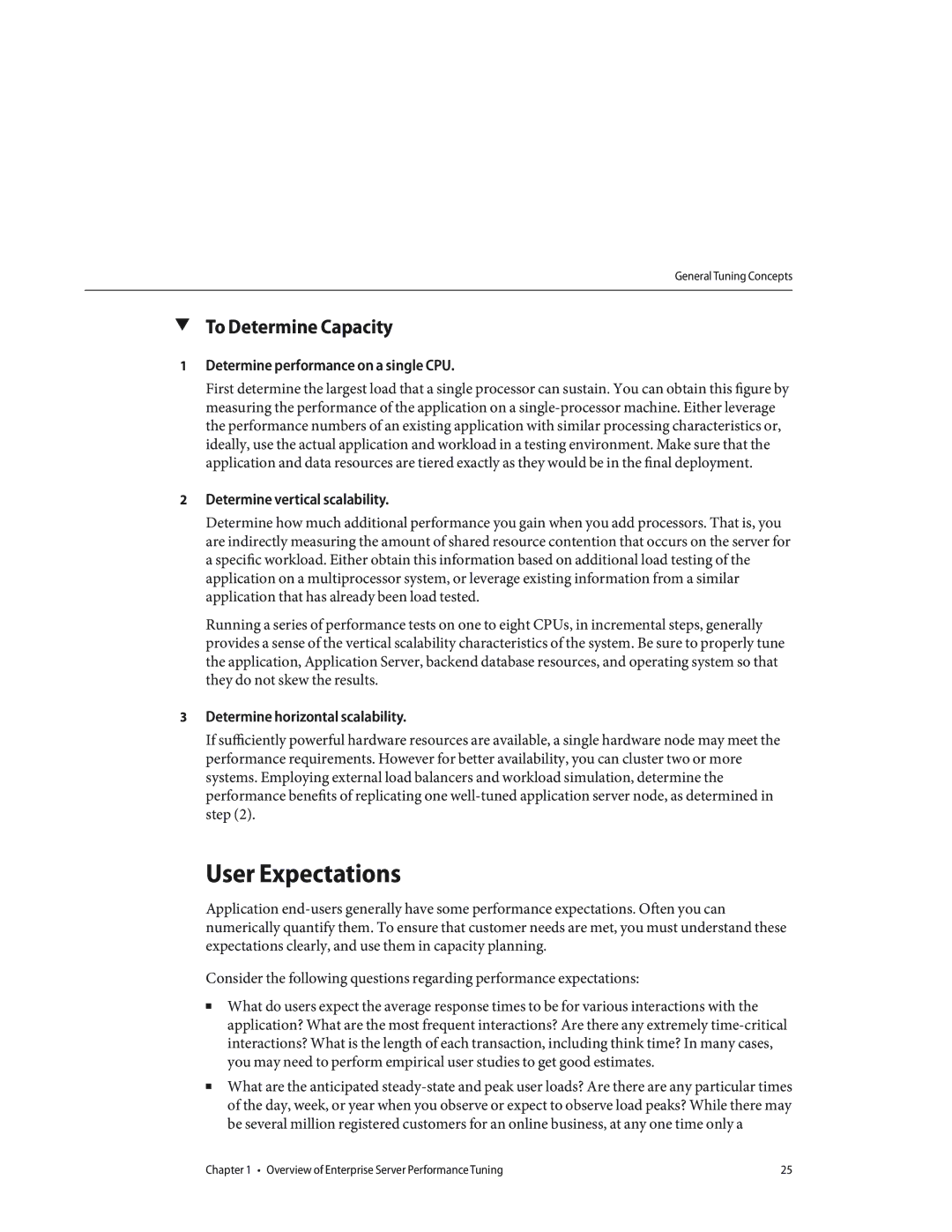General Tuning Concepts
▼To Determine Capacity
1Determine performance on a single CPU.
First determine the largest load that a single processor can sustain. You can obtain this figure by measuring the performance of the application on a
2Determine vertical scalability.
Determine how much additional performance you gain when you add processors. That is, you are indirectly measuring the amount of shared resource contention that occurs on the server for a specific workload. Either obtain this information based on additional load testing of the application on a multiprocessor system, or leverage existing information from a similar application that has already been load tested.
Running a series of performance tests on one to eight CPUs, in incremental steps, generally provides a sense of the vertical scalability characteristics of the system. Be sure to properly tune the application, Application Server, backend database resources, and operating system so that they do not skew the results.
3Determine horizontal scalability.
If sufficiently powerful hardware resources are available, a single hardware node may meet the performance requirements. However for better availability, you can cluster two or more systems. Employing external load balancers and workload simulation, determine the performance benefits of replicating one
User Expectations
Application
Consider the following questions regarding performance expectations:
■What do users expect the average response times to be for various interactions with the application? What are the most frequent interactions? Are there any extremely
■What are the anticipated
Chapter 1 • Overview of Enterprise Server Performance Tuning | 25 |
